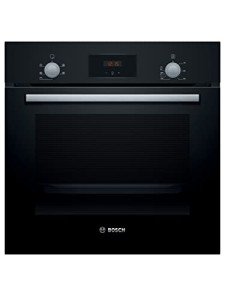Built In Range Tools To Ease Your Daily Lifethe One Built In Range Tri…
페이지 정보
작성자 Adolph 댓글 0건 조회 6회 작성일 25-02-21 14:44본문
Comprehending the Built-In Range: A Deep Dive Into One of one of the most Versatile Programming Features
The built in electric oven-in function range() is among the most commonly used features in programs, particularly in Python. Its simplicity and adaptability make it a necessary tool for designers, engineers, and data scientists alike. In this post, we will check out the essential aspects of the built in range-in range function, its syntax, usage cases, and some practical examples to assist you utilize its power in your coding ventures.
 What is the Built-In Range?
What is the Built-In Range?
In Python, the range() function produces a series of numbers. It is often used for iteration, particularly within loops, making it possible for developers to execute a block of code a particular number of times without manually specifying each model.
 Syntax of the Range Function
Syntax of the Range Function
The range() function can take one, two, or three arguments, and its standard syntax is as follows:
range( start, stop, action).
start: The beginning point of the sequence (inclusive). If omitted, it defaults to 0.
stop: The endpoint of the series (special). This argument is required.
step: The distinction between each number in the sequence. If omitted, it defaults to 1.
Examples of Using Range.
Fundamental Usage: Using range() in an easy for loop to print numbers from 0 to 4:.
for i in range( 5 ):.
print( i).
Output:.
0
1.
2.
3.
4.
Defining a Start and Stop: You can define both a starting point and an endpoint:.
for i in range( 2, 6):.
print( i).
Output:.
2.
3.
4.
5.
Utilizing a Step Value: The step parameter permits you to manage the increments:.
for i in range( 0, 10, 2):.
print( i).
Output:.
0
2.
4.
6.
8.
Counting Backwards: The step can also be negative, enabling counting down:.
for i in range( 5, 0, -1):.
print( i).
Output:.
5.
4.
3.
2.
1.
Practical Applications.
Repeating Over Lists: While utilizing range() is typical in for loops, it can also be useful for iterating over the indices of a list.
fruits = [' apple', 'banana', 'cherry'] for i in range( len( fruits)):.
print( f" i: fruits [i] ").
Output:.
0: apple.
1: banana.
2: cherry.
Developing Number Sequences: The function is convenient for generating sequences of numbers, Built In inbuilt oven Uk (Https://Hikvisiondb.Webcam/) which you might need for algorithms or data adjustment.
number_list = list( range( 10, 21)).
print( number_list).
Output:.
[10, 11, 12, 13, 14, 15, 16, 17, 18, 19, 20] List Comprehensions: range() works perfectly with list comprehensions for more condensed expressions.
squares = [x ** 2 for x in range( 5)] print( squares).
Output:.
[0, 1, 4, 9, 16] Conclusion.
The built-in range function is a fundamental feature in Python that provides a simple method to generate series of numbers, which can be utilized for a range of programs tasks. Whether you are dealing with loops, creating lists, or carrying out algorithms, comprehending how to use range() is vital for effective Python coding. As you continue to check out the language, you'll certainly discover brand-new methods to take advantage of this powerful tool, making your programs tasks more effective and built in Range structured.
The built in electric oven-in function range() is among the most commonly used features in programs, particularly in Python. Its simplicity and adaptability make it a necessary tool for designers, engineers, and data scientists alike. In this post, we will check out the essential aspects of the built in range-in range function, its syntax, usage cases, and some practical examples to assist you utilize its power in your coding ventures.
 What is the Built-In Range?
What is the Built-In Range?In Python, the range() function produces a series of numbers. It is often used for iteration, particularly within loops, making it possible for developers to execute a block of code a particular number of times without manually specifying each model.
 Syntax of the Range Function
Syntax of the Range FunctionThe range() function can take one, two, or three arguments, and its standard syntax is as follows:
range( start, stop, action).
start: The beginning point of the sequence (inclusive). If omitted, it defaults to 0.
stop: The endpoint of the series (special). This argument is required.
step: The distinction between each number in the sequence. If omitted, it defaults to 1.
Examples of Using Range.
Fundamental Usage: Using range() in an easy for loop to print numbers from 0 to 4:.
for i in range( 5 ):.
print( i).
Output:.
0
1.
2.
3.
4.
Defining a Start and Stop: You can define both a starting point and an endpoint:.
for i in range( 2, 6):.
print( i).
Output:.
2.
3.
4.
5.
Utilizing a Step Value: The step parameter permits you to manage the increments:.
for i in range( 0, 10, 2):.
print( i).
Output:.
0
2.
4.
6.
8.
Counting Backwards: The step can also be negative, enabling counting down:.
for i in range( 5, 0, -1):.
print( i).
Output:.
5.
4.
3.
2.
1.
Practical Applications.
Repeating Over Lists: While utilizing range() is typical in for loops, it can also be useful for iterating over the indices of a list.
fruits = [' apple', 'banana', 'cherry'] for i in range( len( fruits)):.
print( f" i: fruits [i] ").
Output:.
0: apple.
1: banana.
2: cherry.
Developing Number Sequences: The function is convenient for generating sequences of numbers, Built In inbuilt oven Uk (Https://Hikvisiondb.Webcam/) which you might need for algorithms or data adjustment.
number_list = list( range( 10, 21)).
print( number_list).
Output:.
[10, 11, 12, 13, 14, 15, 16, 17, 18, 19, 20] List Comprehensions: range() works perfectly with list comprehensions for more condensed expressions.
squares = [x ** 2 for x in range( 5)] print( squares).
Output:.
[0, 1, 4, 9, 16] Conclusion.
The built-in range function is a fundamental feature in Python that provides a simple method to generate series of numbers, which can be utilized for a range of programs tasks. Whether you are dealing with loops, creating lists, or carrying out algorithms, comprehending how to use range() is vital for effective Python coding. As you continue to check out the language, you'll certainly discover brand-new methods to take advantage of this powerful tool, making your programs tasks more effective and built in Range structured.
댓글목록
등록된 댓글이 없습니다.







